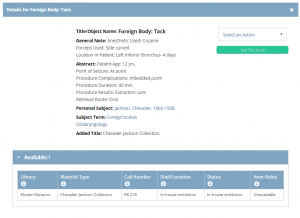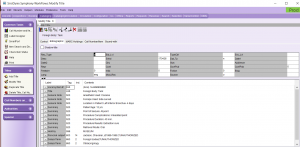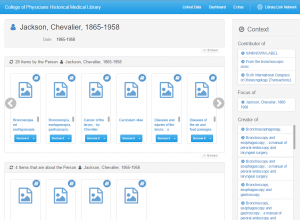The Rush University Medical Center Archives, Chicago, Ill., is the official archival agency of Rush University Medical Center and Rush University. The Rush Archives holds almost 3000 linear feet of material from these two institutions and their predecessor schools and hospitals going back to the founding of Rush Medical College in 1837, two days before the city of Chicago was incorporated. The Rush Archives also includes the personal papers of many individuals related to those institutions. Photographs, audiovisual material, paintings, artifacts, nursing school uniforms and caps, and digital assets document the history of Rush, also.

From St. Luke’s News, August 1946, p. 11. From the St. Luke’s Hospital Records, #4704.
Hundreds of the Rush Archives’ most used documents have been digitized and are available on the Internet Archive, including annual reports and newsletters from Rush Medical College; Presbyterian Hospital, founded in 1883; St. Luke’s Hospital, founded in 1864; and the Central Free Dispensary, founded in 1873. These items also document Presbyterian Hospital and St. Luke’s Hospital’s nursing schools, founded in 1903 and 1884, respectively. These newsletters and annual reports provide significant information and photographs regarding the advancement of medical and nursing education, developments in research, and changes in patient care during Rush’s more than 175 years of serving Chicago communities.
All of the yearbooks in the Rush Archives from the following schools are now available online, also:
–St. Luke’s Hospital School of Nursing
–Presbyterian Hospital School of Nursing
–Presbyterian-St. Luke’s Hospital School of Nursing
–Rush University and its four colleges, Rush Medical College, the College of Nursing, the College of Health Sciences, and the Graduate College
Thanks to the Book Digitization Initiative Grant and the Yearbook Digitization Project grant from the Consortium of Academic and Research Libraries in Illinois (CARLI), these items were digitized by and made available through the Internet Archive.
Rush University Medical Center Archivist, Nathalie Wheaton, MSLS, is particularly fond of the 1895 issue of

Drawing by Rush Medical College student Christian H. Beyer, class of 1895.
From The Pulse Yearbook, 1895, p.158. From the Rush Medical College Records, #4707.
Rush Medical College’s yearbook, The Pulse, and the school’s newsletter, The Corpuscle, 1890-1900. “The 1890s were an exciting time in Chicago history, spearheaded by the 1893 World’s Columbian Exposition. The World’s Fair really put Chicago on the map. The items in our collection from the 1890s feature wonderful drawings of smiling skulls, darkly funny poems, and photographs of its football team in action. During this era, Rush’s faculty was heavily involved in raising national standards for medical education. Rush Medical College set itself apart from many other Chicago medical schools by providing its students with a solid background in the sciences, incomparable laboratories, and experience in patient care through Rush’s teaching hospital, Presbyterian Hospital.” Rush Medical College became affiliated with the University of Chicago in 1898 and served as its medical school until 1941. To learn more about the history of Rush, please visit http://rushu.libguides.com/rusharchives.






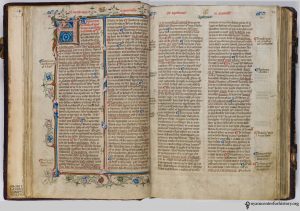 The New York Academy of Medicine Library announced
The New York Academy of Medicine Library announced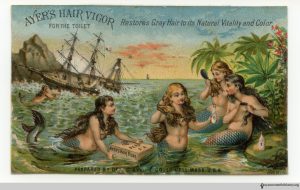 Also featured is The William H. Helfand Collection of Pharmaceutical Trade Cards, which contains approximately 300 colorful pharmaceutical trade cards produced in the U.S. and France between 1875 and 1895 that were used to advertise a wide range of goods in the nineteenth century. Such cards are now regarded as some of the
Also featured is The William H. Helfand Collection of Pharmaceutical Trade Cards, which contains approximately 300 colorful pharmaceutical trade cards produced in the U.S. and France between 1875 and 1895 that were used to advertise a wide range of goods in the nineteenth century. Such cards are now regarded as some of the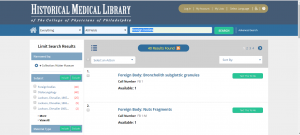 catalogs in the United States that merges descriptions of, and access to, library, archival and museum collections.
catalogs in the United States that merges descriptions of, and access to, library, archival and museum collections.